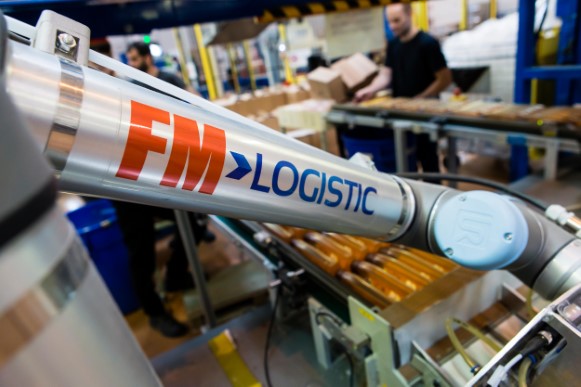Automatic warehouses: Features, advantages and types
In this article we will talk about automated warehousing and its characteristics, advantages and types. In today’s world of logistics, stock management in warehouses…
On March 27, 2023

In this article we will talk about automated warehousing and its characteristics, advantages and types. In today’s world of logistics, stock management in warehouses…
On March 27, 2023
In this article we will talk about automated warehousing and its characteristics, advantages and types. In today’s world of logistics, stock management in warehouses is a critical and complex task that requires innovative and efficient solutions to ensure maximum accuracy and speed in the process. This is where automated warehousing comes into play, an advanced solution that optimizes storage space, reduces waiting times and increases efficiency in inventory management. FM Logistic offers quality warehousing services, in which the most advanced solutions in automation and technology are implemented to guarantee customer satisfaction. Join us in this article to learn more about automated warehousing and its benefits.
Automated warehousing in logistics can be defined as the use of automated systems to manage the storage and retrieval of goods in a warehouse. These types of systems include technologies such as robots, conveyors, cranes and warehouse management software, which enable greater efficiency and accuracy in the process of storing and retrieving products. The goal of these systems is to reduce storage costs, improve productivity, and increase the speed and accuracy of product delivery. In addition, automated storage in logistics also enables better use of warehouse space, as the systems can stack products high in a safe and efficient manner.
Automated warehouses use a centralized control system to manage incoming and outgoing products. First, products are tagged with a barcode or radio frequency identification (RFID) system that allows them to be tracked in the system. The products are then placed in containers or pallets, which are automatically transported through a network of conveyors and cranes to the assigned storage location. In the warehouse, the products are stored on shelves or racks using automated cranes that place the garbage cans or pallets in the correct location. When a product needs to be retrieved, the warehouse management system sends an order to the conveyor system, which locates and transports the container or pallet to the pick point.
A variety of technologies are used in automated warehouses to automate storage and inventory management tasks. These include:
An automated warehouse is a facility that uses automation technology to efficiently manage the storage and retrieval of products. To function properly, it requires warehouse management software (WMS) that controls all automated processes and devices, such as robots, conveyors and elevators. The WMS is responsible for receiving and processing customer orders, determining the location of products in the warehouse, assigning the task to the appropriate robot, and controlling their movement and handling. It also monitors space availability and inventory turnover, and provides real-time reporting and analysis for decision making. Efficient automated warehouse management can significantly improve productivity and accuracy, reduce errors and storage costs, and increase customer satisfaction.
El almacenamiento automático ofrece varias ventajas sobre los sistemas de almacenamiento tradicionales. En primer lugar, mejora la eficiencia y la productividad al reducir los tiempos
Automated storage offers several advantages over traditional storage systems. First, it improves efficiency and productivity by reducing downtime, increasing storage capacity and speeding up product retrieval. By automating product handling, it also reduces the risk of human error and improves accuracy and speed in the retrieval process. Space optimization in an automated warehouse is also possible because the system can adjust to demand and changes in inventory turnover. Finally, automated warehousing also improves operational safety in warehouses and product handling, as robots and storage units are designed to handle and transport products safely and without damaging them.

According to its construction:
According to the type of merchandise:
According to its compaction:
According to their level of automation:
According to the type of robot:
Para saber qué tipo de almacén automático es el adecuado para tu empresa, es necesario evaluar una serie de factores, como el tamaño de tus productos, la velocidad de rotación, el volumen de inventario y la disponibilidad de espacio en tu instalación. También es importante considerar la tecnología de automatización disponible y el nivel de complejidad requerido en tus procesos de almacenamiento y recuperación de inventario.
To know which type of automated warehouse is right for your company, you need to evaluate a number of factors, such as the size of your products, turnover rate, inventory volume and space availability in your facility. It is also important to consider the automation technology available and the level of complexity required in your inventory storage and retrieval processes.
The installation of an automated warehouse is a process that requires detailed planning and a specialized team. First, an analysis of the warehouse requirements must be performed, including the type of products to be stored and the volume of daily movements. Next, the system is designed, the necessary structures are built and storage equipment such as racking, conveyors and elevators are installed. The programming and configuration of the control systems and software are a crucial part of the installation process, as these systems are responsible for managing the warehouse and optimizing the storage and retrieval processes. Once installed, the automated warehouse must undergo extensive testing to ensure that it is compliant and ready for operation.
How can we help you ?
Fill in the form